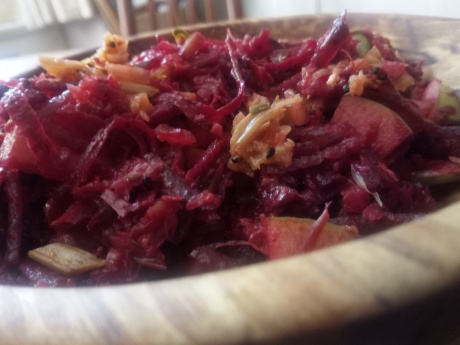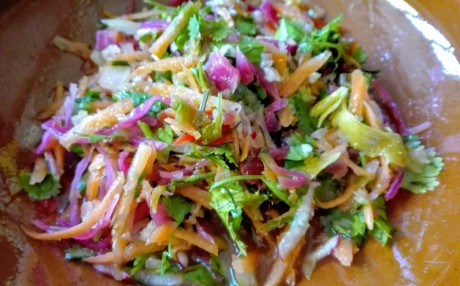 Two fun things, and they both have to do with tortilla chips. Perhaps this is because, as a taco fiend, I often have broken corn tortillas calling for rescue.
Two fun things, and they both have to do with tortilla chips. Perhaps this is because, as a taco fiend, I often have broken corn tortillas calling for rescue.
Watermelon Pickle, well, the rind at least, the green skin carefully pared from the white pretty flavourless bulk that contains the precious sweet pink flesh. You’ve heard about it this pickle… you’ve wondered. You don’t see the point in vinegar really as you identify more as a fermenter. You look up fermented watermelon rind and find a recipe that suggests you make a brine. You kind of decide not to make a brine– there’s so much water itself in the watermelon. Instead you pack the pared rind that you’ve saved by insisting everyone puts them in a special bowl, and a teaspoon of sea salt, and you pack it down in a jar, and observe it getting wetter and wetter, creating it’s own layer of brine. It occurs to you to add some hot pepper, in this case a yellow jalapeño. This was a good idea but you could use any herb or spice or flavour as watermelon rind is really so very mild and passive. “Do with me what you will,” it said.
You realise quickly it’s not going to keep a bite or crunch very easily, so you surrender. After several days you taste it, and you are like, wow, THIS is fermented watermelon rind pickle. Here we are, this is it. And you get the urge to chop it up with spring onions and the jalapeño, and loads of fresh coriander, and make a salsa.

Other salsas:
————————————————————————————
 KIMCHI FAUXRITOS,
KIMCHI FAUXRITOS,
or,
last time I ate spicy cheesy Doritos, along with, admittedly, red wine, I got such a killer migraine that I’m afraid to eat them again but do miss the whole experience so decided to try a DIY, perhaps healthier version:
Had some rather pungent kimchi in the fridge which I dehydrated in a very low oven. It took a while….

When it felt really dry, I pulverised it as much as possible, mixed it with oil
two ways:
Fry the uncooked (corn) tortilla scraps in the spicy oil, or
Toss the broken pieces (or proper triangles) in the dried kimchi and oil and bake in the oven.
I made two batches of each, one with nutritional yeast (for a cheesy note) and one without.
Comments: These are really nice snacks, fun to make, serve and eat. They didn’t have that WHAM of Doritos, but maybe that’s not a bad thing. I might add extra chilli powder next time.

 I knew that
I knew that 



 Lots of people don’t like the straight shot of ferments just on their own. Integrating them into salads is a great way to ensure the health benefit in your diet, with sour and salty flavours softened. I made this wonderful salad yesterday, and thought to record it here.
Lots of people don’t like the straight shot of ferments just on their own. Integrating them into salads is a great way to ensure the health benefit in your diet, with sour and salty flavours softened. I made this wonderful salad yesterday, and thought to record it here. Hope you like the picture of my cranberry sauce, the one made with the the recipe that used to be (still is?) on the packaging bag– cranberries blended with a whole orange, and sugar. This year I made it in advance with a little kombucha to enliven, in the hopes that it would keep longer without fermenting alcoholically… and be a bit probiotic.
Hope you like the picture of my cranberry sauce, the one made with the the recipe that used to be (still is?) on the packaging bag– cranberries blended with a whole orange, and sugar. This year I made it in advance with a little kombucha to enliven, in the hopes that it would keep longer without fermenting alcoholically… and be a bit probiotic. It’s a bit terrifying beneath the skies controlled by Rocket Man and Barking Dog, when you know a misunderstanding or miscalculation, based on rabid ego or hungry id and advanced technological war toys, could render apocalypse for a terrible number of people.
It’s a bit terrifying beneath the skies controlled by Rocket Man and Barking Dog, when you know a misunderstanding or miscalculation, based on rabid ego or hungry id and advanced technological war toys, could render apocalypse for a terrible number of people.






